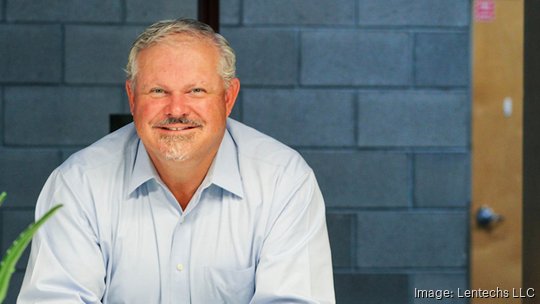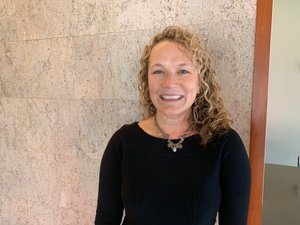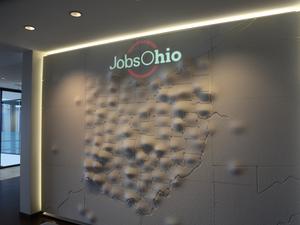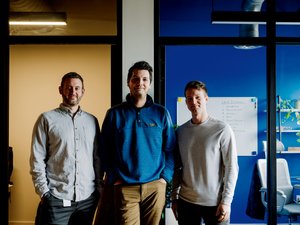
An Ohio State University spinoff has raised $6 million to advance development of its bifocal and multifocal contact lenses that the company says perform as well as eyeglasses – and better than existing contacts.
Lentechs LLC will use the proceeds for completing its methods for mass production and additional clinical trials to test performance of its Apioc lens against multifocal lenses made by the four eyecare giants, CEO Robin Sears told Columbus Inno. And then the startup likely will have to raise another round for its commercial launch.
"We understand wholeheartedly, the big companies will try to prevent us from gaining any market share," Sears said.
"They will be formidable opponents in the marketplace – they have a long history of leadership," he said. "There is such a huge unmet need in the doctors' offices for these patients with presbyopia. That allows us to drive a wedge into the contact lens business."
Apioc is epected to launch in late 2024 or early 2025, he said. Lentechs market research indicates it could be the leading product for multifocal contact lenses after five years. Optometrists who have served as advisers or tested the lenses universally are excited about it, Sears said.
"I'm not saying it's going to be easy," Sears said. "That's the great thing about bringing something new and exciting and innovative to the marketplace."
Vision Vestments LLC led the round, according to a news release, with "significant" participation from JobsOhio Growth Capital Fund, Ohio Innovation Fund, Bluestem Capital, and Rev1 Ventures.
"Our group shares the passion for disruptive innovation and is completely aligned with Lentechs's leadership in finalizing these key objectives to further differentiate the technology," Vision Vestments Principal Craig Krenzel said in the release. The principal of Dublin independent agency Arthur Krenzel Lett Insurance Group (as well as former OSU quarterback and NFL player) assembled a group of investors to create the biotech-focused group, Sears said.
What's so different about the Apioc lens?
About 120 million U.S. adults have presbyopia, the natural loss of up-close focus with age. Less than 15% of them wear contacts, while 70% would like to switch from glasses, according to a Lentechs market study in 2020.
Existing contacts sit on the cornea and move with the eye. Solutions for presbyopia are either to set one lens for near vision and the other for distance, or make concentric rings of focal power around the pupil, which for many results in degraded distance vision.
Invented by OSU optometry Professor Melissa Bailey and emeritus Professor Joe Barr, the Apioc lens hangs from the inside of the eyelid – so the eyeball freely moves up and down behind it to focus through the desired prescription. The lens also stays put when blinking, catching again on the lid when the eye opens.
In November 2021, Lentechs announced that patients in a clinical trial reported “clinically meaningful and statistically superior distance vision" compared with commercially available multifocal lenses. In January 2022 Contact Lens Spectrum, a clinical news source for eye doctors, named Apioc "product of the year."
Lentechs was in Inno's inaugural class of Startups to Watch for 2022. The plan was to launch that year, but leadership decided to overcome a disadvantage compared to the big-name lenses.
Until then, the startup had made each Apioc lens in the lab using a lathe process, which takes 5 minutes apiece. Commercial lenses are mass produced by molding, which is faster and costs less. Plus, molded lenses are more comfortable and come in convenient blister packs instead of in jars.
Mass production by lathe "would require an exorbitant amount of capital," Sears said.
"We made a strategic decision the best possible thing for us is to go to ... the standard in the marketplace," he said.
Conversion brought technical challenges that Lentechs overcame through trade secrets to produce molded lenses that performed the same.
The U.S. Food and Drug Administration had approved the lathe-produced lens as a medical device, so the company will go through that process again. It's pursuing a new round of clinical trials for the molded lenses – not required by the FDA, but if results indicate superior performance, that can speed adoption in the market.
A regulatory filing indicated the round's first investment came in January – shortly after VC investing nationwide hit its nadir after declining throughout 2022, according to PitchBook data.
Throughout last year, Lentechs started the diligence process with several interested firms, Sears said, but late in the game each firm followed the industry trend of switching priorities to funding only existing portfolio companies instead of adding new investments.
"We had to keep reloading our pipeline of potential investors," Sears said.
Finally he renewed conversations he'd had several years earlier with Krenzel, who happens to be co-inventor Barr's son-in-law.
"When you have a technology this different and exciting, it's easy to get passionate about it it and keep your energy high and drive toward the finish line," Sears said.
Sears was formerly an executive with Abbott and eyecare giant Allergan. He doesn't wear glasses, so hasn't had a chance to try out Apioc.







